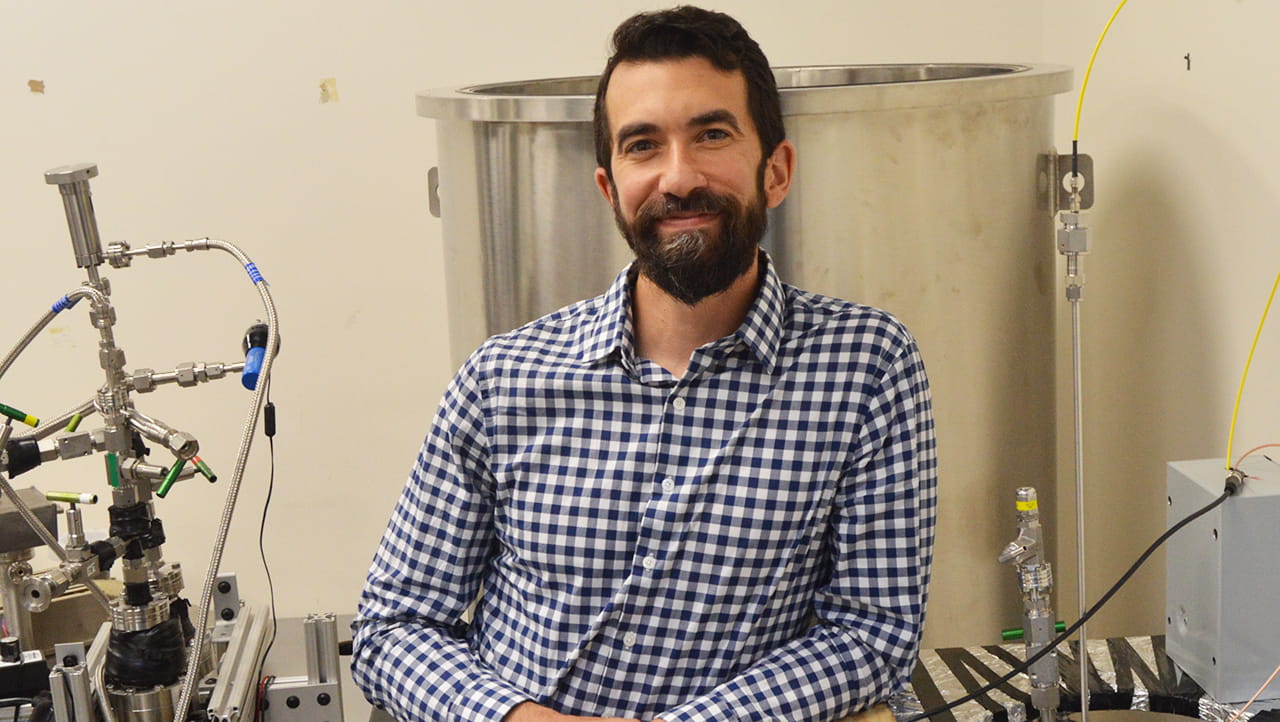Asaadi’s high energy physics research receives DOE support
Jonathan Asaadi, assistant professor of physics at The University of Texas at Arlington, has earned the prestigious U.S. Department of Energy (DOE) Early Career Research Award to support his work in high energy physics.
Asaadi is one of just 76 scientists nationwide to receive the award from the DOE Office of Science this fiscal year. It will provide $750,000 over five years for Asaadi’s project, titled “Discovery Science with New Multi-Modal Pixel-Based Noble Element Time Projection Chambers.”
The DOE Early Career Research Award supports the individual research programs of outstanding scientists early in their careers and stimulates research careers in disciplines supported by the DOE Office of Science.
“I am very pleased to receive this award and grateful for the opportunity to continue my research at UTA and help enhance this institution’s preeminence in the broader academic world,” Asaadi said.
His project will utilize a particular type of time projection chamber (TPC), which is a particle detector that provides a complete, 3D image of large quantities of simultaneous subatomic particle collisions. The TPC was invented by David Nygren—now a Presidential Distinguished Professor of Physics at UTA—at the Lawrence Berkeley Laboratory in the mid-1970s. TPC technology is used extensively at the forefront of high energy physics research.
Asaadi’s work involves noble elements, which include the least reactive metals and inert gases. Detectors using noble elements, such as liquid and gaseous argon and xenon, have become a popular technology for pursuing the physics associated with neutrino mass, the search for new physics of dark matter, and the exploration of the unknown in searches for new particles and interactions, Asaadi said.
In a noble element TPC, particles deposit their energy into one of three channels: heat, charge, and light. Noble element detectors are used to exploit one or more of these signal components.
“The objective of this research is to transform the physics reach of these instruments and develop new detection strategies to expand their capabilities to previously inaccessible regimes,” he said. “The true goal of this research, to quote Galileo, is to ‘measure what is measurable, and make measurable what is not so,’ with the bold undertaking to realize the full capabilities of noble element TPCs.”
Asaadi’s work has helped to substantially raise UTA’s research profile in the field of particle physics. He and Nygren recently received a $1.1 million DOE grant for the Q-Pix Consortium, a project being led by UTA. The consortium comprises five universities and four national laboratories, with the goal of creating a pixel-based, 3D readout technology based on the novel readout scheme known as Q-Pix, with low detection thresholds enabling the discovery of new physics at the very limit of detection.
To be eligible for the DOE Early Career Research Award, a researcher must be an untenured tenure-track assistant or associate professor at a U.S. academic institution or a full-time employee at a DOE national laboratory who received a Ph.D. within the past 10 years.
“This award is a great honor and reflects the high quality and importance of Jonathan’s research,” said Alex Weiss, professor and chair of the UTA Department of Physics. “It presents a fantastic opportunity for Jonathan, his students, his postdocs, our department, and UTA.”
College of Science Dean Morteza Khaledi commended Asaadi on the award and for helping to advance UTA’s push in data-driven discovery, one of the main themes of its Strategic Plan 2025.
“This is a tremendous achievement for Dr. Asaadi and I join the rest of the UTA community in congratulating him on this outstanding honor,” Khaledi said. “He has demonstrated that he is among the brightest young scientists in the nation in the field of particle physics research. This Early Career Award is also further proof of the strength and excellence of UTA’s high energy physics program.”
- Written by Greg Pederson, College of Science
